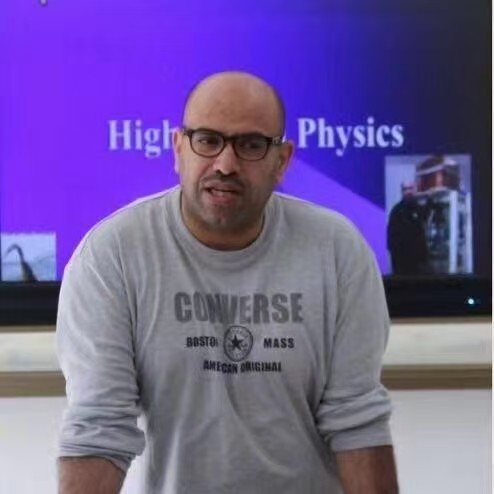
Prof. M.E. Medhat
Nantong college, international dept. Nantong, China
Title: Photo Absorption Technique: Novel Method for Detecting Elemental Concentration of Human Teeth
Abstract:
The
photoabsorption technique was successfully applied to measure the elemental
concentrations (O, C, Ca, N, P, Na, Mg) in whole teeth samples via photon
attenuation. Derived expressions for elemental quantification showed
satisfactory agreement with certified data, with higher accuracy for O, C, Ca,
N, and P compared to Na and Mg. Discrepancies were attributed to the chemical
composition of teeth, the mixture rule, and the neglected effects of atomic
wavefunction bonding and crystalline molecular arrangements. Systematic deviations
between calculated and experimental results arose from elemental solubility in
distilled water and experimental irradiation/detection conditions. Despite
these limitations, the technique offers practical advantages, including rapid,
inexpensive, and non-destructive analysis, demonstrating its potential for
elemental concentration studies in dental materials.
Keywords: Human
teeth; Photon attenuation; Geant 4, XCOM
Biography:
Dr. Medhat is a distinguished Professor of Experimental Nuclear Physics with extensive international experience spanning Egypt and China. Currently based in China, where he has worked since 2012, Dr. Medhat holds positions at leading institutions including the University of Chinese Academy of Sciences (UCAS) International Education Center (SinowJ), Yinghao College (Guangzhou), and Jining Confucius International College (Shandong). Prior to his work in China, he served at the Egyptian Atomic Energy Authority and contributed significantly at the American University in Cairo.
Dr. Medhat 's expertise lies at the intersection of experimental nuclear physics and advanced computational methods. His PhD research focused on the modern utilization of accurate gamma-ray spectral analysis techniques using HPGe detectors, conducted at Zagazig University in cooperation with the Joint Institute for Nuclear Research (JINR), Dubna, Russia. He further honed his skills during a Postdoctoral Fellowship at the Institute of High Energy Physics (IHEP) in Beijing (2012-2015).
A recognized technical leader, Dr. Medhat has made substantial contributions to software development in nuclear science. He has designed and implemented critical packages including: a Gamma-ray Spectrum Analysis and Neutron Activation Analysis system (PGSA), automation systems for Neutron Activation Analysis (NAA), codes for diagnostics in Irradiation Channels, and pioneered the use of neural networks for predicting photon attenuation in massive targets. His work extends to radiation protection and dosimetry, where he served as an expert for Egypt's Ministry of Health.
His leadership experience includes roles as Head of the Nuclear Reaction Laboratory at Egypt's Nuclear Research Center and Coordinator of the Compton-Suppression Spectrometer Lab. Dr. Medhat possesses a strong technical skillset encompassing programming languages, graphics/web design, operating systems, and specialized scientific software. An active researcher, Dr. Medhat has authored 61 publications, including 20 in international journals and 41 in conference proceedings. His work has been presented at numerous international conferences, and he has been a key contributor to the Geant4 Monte Carlo simulation project at CERN.
Research Interests:
• Development of distributed and automated systems for nuclear science.
• Geant-4 Monte Carlo Simulation (Simulation on detection system of projectiles).
• Wavelet and Neural network spectrum processing.
• Gamma Spectroscopy and Neutron Activation Analysis.
• Application of attenuation of gamma rays.
Disciplines: Accelerator Physics - Nuclear Physics - Experimental Physics
Languages: Dr. Medhat is fluent in Arabic, English, and Chinese, with a working knowledge of Russian. His diverse language skills complement his international research collaborations and enhance his ability to engage with global scientific communities.